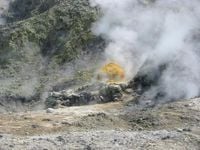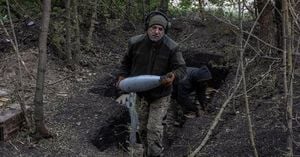In the shadow of the ancient Campi Flegrei caldera, a fresh debate is stirring in Pozzuoli. The trigger? A new request by Prysmian Powerlink, a subsidiary of the global cable giant Prysmian, to conduct geothermal drilling in the area. The proposal, officially submitted on July 7, 2025, to the Directorate General for Economic Development and Productive Activities of the Campania Region, has reignited long-standing concerns about the delicate balance between technological progress and environmental safety in this geologically restless corner of southern Italy.
Prysmian Powerlink’s application seeks a one-year, potentially extendable permit for what it calls the "Re.Ca.Wa" project—a small-scale local geothermal utilization effort in Pozzuoli. The technical details, as reported by NapoliToday, involve drilling that would tap into the area’s underground heat and groundwater, with an average extraction rate of 5 liters per second, peaking at 10 liters per second. Over the course of a year, this would amount to a total of 64,800 cubic meters of water. The intention is to harness this geothermal energy for heating, cooling, and even generating electricity for local buildings.
Yet, for many residents and local officials, the proposal is anything but routine. The Campi Flegrei are notorious for their bradyseism—a phenomenon where the ground rises and falls due to shifting magma and hydrothermal activity below the surface. This natural instability has, for decades, kept the community on edge, especially when it comes to projects that might disturb the already fragile subsurface.
“The concern of the citizens comes before everything,” Pozzuoli’s mayor, Luigi (Gigi) Manzoni, stated unequivocally on August 22, 2025. According to NapoliToday, Manzoni continued, “It is understandable, the alarm raised among residents, and we believe it is fundamental that their worries are heard and receive concrete answers.”
At the heart of the mayor’s message is a call for transparency—and, crucially, for patience. As of late August, Manzoni emphasized that no official project documentation or technical details have been provided by Prysmian Powerlink. “It will not be possible to open any discussion without the presentation of a detailed project,” he insisted. “On such a delicate issue, it is not acceptable to discuss in vague or hypothetical terms.”
This insistence on clarity echoes a political stance taken a decade ago. In 2015, the Pozzuoli City Council passed a resolution expressing strong opposition to any drilling activities on its territory—a decision that, in Manzoni’s words, “remains a fixed point and will continue to guide every future evaluation.” For the administration, this isn’t just about procedure; it’s about upholding a commitment to protect a landscape that is both extraordinary and vulnerable.
“The administration of Pozzuoli is following the evolution of the situation with maximum attention, especially considering the extraordinary nature and fragility of the Campi Flegrei territory,” Manzoni explained. The city has already started discussions with the Campania Region, which holds the authority to grant or deny such permits. “Our goal is to guarantee maximum transparency and full involvement of local institutions,” he added.
But the administration’s caution has not quelled the passionate objections of environmentalists and local politicians. The Greens party, represented by regional leader and MP Francesco Emilio Borrelli and Europa Verde city councilor Vincenzo Pafundi, has come out forcefully against the project. Their principal fear is that any drilling operation, no matter how small, could further destabilize an area already marked by frequent ground movements and seismic swarms.
“We have long denounced the risks of drilling in areas already severely tested by phenomena such as bradyseism,” Borrelli told NapoliToday. He pointed to a particularly alarming incident: “We even recall the explosion of a geyser during one of these operations right in the Pozzuoli area. This is a risk we consider unacceptable, especially given the seismic swarms that have recently affected the Campi Flegrei.”
The Greens have gone so far as to file a parliamentary inquiry, demanding “in-depth investigations to ascertain any possible correlation between drilling activities carried out between 2010 and 2020 and subsequent seismic swarms.” Their position is clear: the precautionary principle should prevail, meaning that no operation should proceed unless its safety can be assured beyond reasonable doubt.
For many residents, the debate is more than academic. The memory of past seismic events, coupled with the ever-present risk of bradyseism, has bred a culture of vigilance. Local officials are keenly aware of this. “Defending the Campi Flegrei, protecting the safety of citizens, and safeguarding the environment remain our absolute priorities,” Manzoni affirmed. “No decision will be made without total clarity and without putting the community at the center.”
Meanwhile, the ball is squarely in the court of the Campania Region. As the competent authority, regional officials must weigh the potential benefits of geothermal energy—an undeniably clean and renewable resource—against the unique geological risks posed by the Campi Flegrei. It’s a delicate calculation, one that will likely require input from geologists, engineers, environmentalists, and, most importantly, the local populace.
What’s at stake goes beyond the technicalities of a single drilling project. The debate touches on broader questions about the future of energy, the stewardship of natural resources, and the rights of communities to shape their own destinies in the face of powerful corporate and governmental interests. For some, geothermal energy represents a path toward sustainability and energy independence. For others, it’s an unacceptable gamble with the safety and stability of a region that has already endured more than its share of natural hazards.
As the process unfolds, one thing is certain: the people of Pozzuoli and the Campi Flegrei will not be silent bystanders. Their voices—amplified by local leaders, environmental advocates, and a watchful media—are sure to play a decisive role in whatever comes next. The outcome will likely set a precedent for how Italy, and perhaps other countries with similarly sensitive landscapes, navigate the intersection of innovation, safety, and community consent.
For now, the city waits. No drilling rigs will move in, no ground will be broken, until every question is answered and every concern addressed. It’s a pause that speaks volumes about the values of a community determined to protect both its future and its fragile, storied land.




